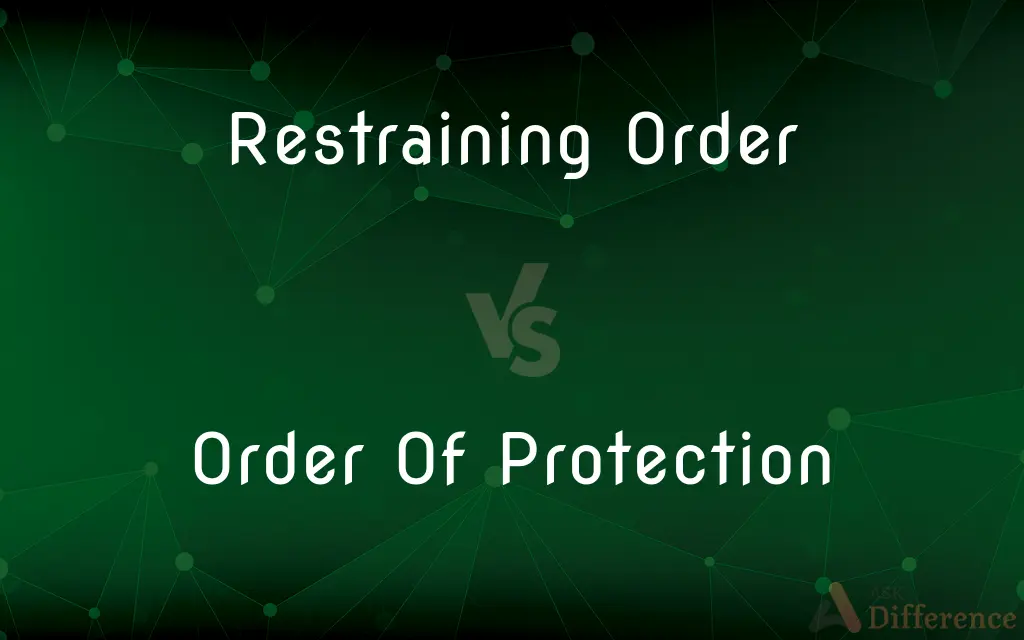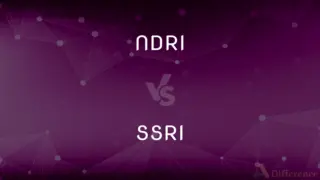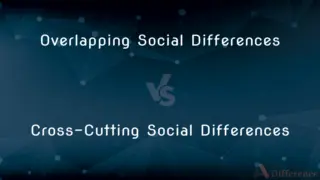Restraining Order vs. Order Of Protection — What's the Difference?
By Fiza Rafique & Urooj Arif — Published on March 5, 2024
A restraining order is a broad legal measure to prevent harassment or abuse, while an order of protection specifically limits someone's behavior to protect another from harm.

Difference Between Restraining Order and Order Of Protection
Table of Contents
ADVERTISEMENT
Key Differences
A restraining order, issued by a court, is designed to prevent harassment, stalking, or abuse by restricting someone's actions towards the petitioner. An order of protection, often used in domestic violence cases, specifically aims to protect individuals from threats or acts of violence by imposing legal limits on the perpetrator's behavior.
Both legal instruments serve to protect individuals, while a restraining order can be applied in various contexts, such as neighbor disputes or stalking cases. In contrast, an order of protection is typically used in closer relationships, including family and intimate partners, focusing on preventing harm and violence.
Obtaining a restraining order may require demonstrating a pattern of harassment or threat. For an order of protection, the petitioner must usually prove an immediate threat or history of violence, often within a domestic setting.
Violating a restraining order or an order of protection results in legal consequences, including arrest. However, the specific penalties and enforcement mechanisms can vary, often depending on the jurisdiction and the severity of the violation.
Both orders aim to protect by limiting contact or proximity. However, orders of protection might also include specific provisions, like removing the abuser from a shared home or granting temporary custody of children, which are not typically part of restraining orders.
ADVERTISEMENT
Comparison Chart
Purpose
Prevents harassment, stalking, or abuse
Protects against threats or acts of violence
Applicable Contexts
Broad, including various types of disputes
Primarily domestic or intimate relationships
Legal Requirements
Proof of harassment or threat
Proof of immediate threat or history of violence
Enforcement and Penalties
Legal consequences for violation, varies by jurisdiction
Specific legal consequences, may include arrest
Specific Provisions
May limit contact or activities
May include removal from home, custody of children, etc
Compare with Definitions
Restraining Order
Broad application beyond domestic issues.
Businesses sometimes seek restraining orders to stop harassment by former employees.
Order Of Protection
Enforced strictly with severe penalties for violation.
Breaking an order of protection is a criminal offense that leads to arrest.
Restraining Order
Enforced by law to protect individuals.
Violating the restraining order could result in immediate arrest.
Order Of Protection
Focuses on preventing harm in close relationships.
She obtained an order of protection after documenting evidence of abuse.
Restraining Order
Can be temporary or permanent based on court decisions.
The court issued a temporary restraining order until the hearing.
Order Of Protection
May include specific restrictions like custody or living arrangements.
The order of protection granted her temporary custody of the children.
Restraining Order
A court order to prevent one person from contacting or approaching another.
After repeated harassment, Jane sought a restraining order against her ex-partner.
Order Of Protection
Requires evidence of threat or violence for issuance.
To get an order of protection, victims must often provide proof of violence.
Restraining Order
Legal measure to stop harassment or abuse.
The restraining order prohibited the stalker from coming within 500 feet of the victim.
Order Of Protection
A legal directive to safeguard victims of domestic violence.
The order of protection barred the abuser from entering the family home.
Common Curiosities
What is the main purpose of a restraining order?
To prevent harassment, stalking, or abuse by restricting someone's behavior.
What do you need to obtain an order of protection?
Proof of an immediate threat or history of violence, often within a domestic setting.
Are the legal consequences the same for violating both types of orders?
The consequences can vary, but both result in legal action, potentially including arrest.
Can a restraining order apply in situations outside of domestic violence?
Yes, it can be applied in various contexts, including neighbor disputes or stalking cases.
How quickly can an order of protection be obtained?
Depending on the jurisdiction, it can sometimes be issued immediately or within a few days to address urgent threats.
Can a restraining order be temporary?
Yes, courts often issue temporary restraining orders until a full hearing can be held.
Is an order of protection enforceable outside the issuing state?
Yes, orders of protection are generally enforceable across state lines under the Full Faith and Credit Clause.
Can an order of protection affect child custody?
Yes, it can include provisions for temporary custody arrangements to protect the children involved.
How does an order of protection differ from a restraining order?
It specifically aims to protect from threats or violence in closer relationships, with provisions like removing the abuser from a shared home.
Are restraining orders public record?
Yes, restraining orders are generally part of the public record, although some details may be kept confidential for safety reasons.
What kind of evidence is needed for a restraining order?
Evidence of harassment, stalking, or a credible threat is typically required.
What happens if someone violates a restraining order?
Violation of a restraining order can lead to arrest and criminal charges.
Can either order be modified or dismissed?
Yes, either party can request the court to modify or dismiss the order, but it's up to the court to decide.
Do you need a lawyer to obtain a restraining order or an order of protection?
While not required, having legal representation can help navigate the process and improve the chances of obtaining an order.
Can a restraining order or order of protection be issued against a minor?
Yes, but the process and considerations might differ due to the individual's age.
Share Your Discovery

Previous Comparison
NDRI vs. SSRIAuthor Spotlight
Written by
Fiza RafiqueFiza Rafique is a skilled content writer at AskDifference.com, where she meticulously refines and enhances written pieces. Drawing from her vast editorial expertise, Fiza ensures clarity, accuracy, and precision in every article. Passionate about language, she continually seeks to elevate the quality of content for readers worldwide.
Co-written by
Urooj ArifUrooj is a skilled content writer at Ask Difference, known for her exceptional ability to simplify complex topics into engaging and informative content. With a passion for research and a flair for clear, concise writing, she consistently delivers articles that resonate with our diverse audience.

















































